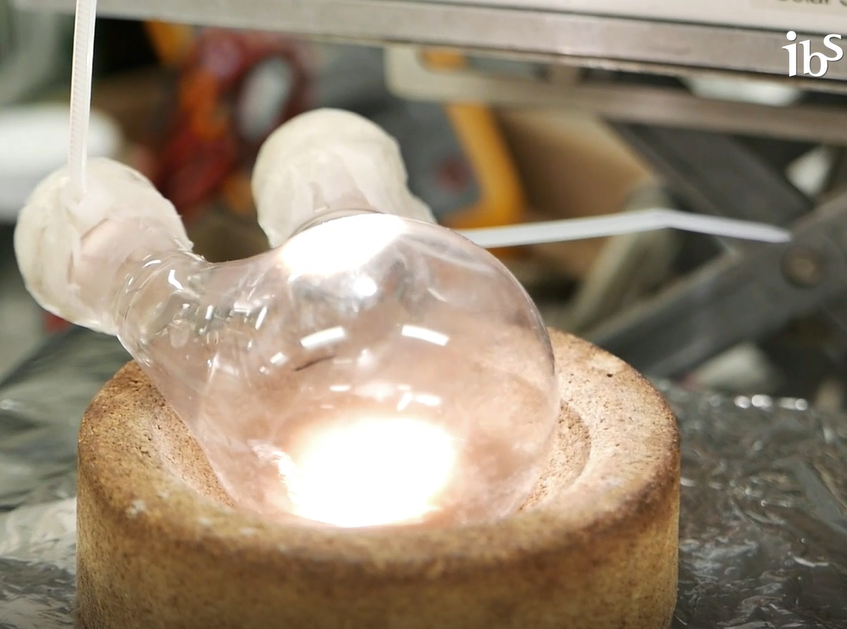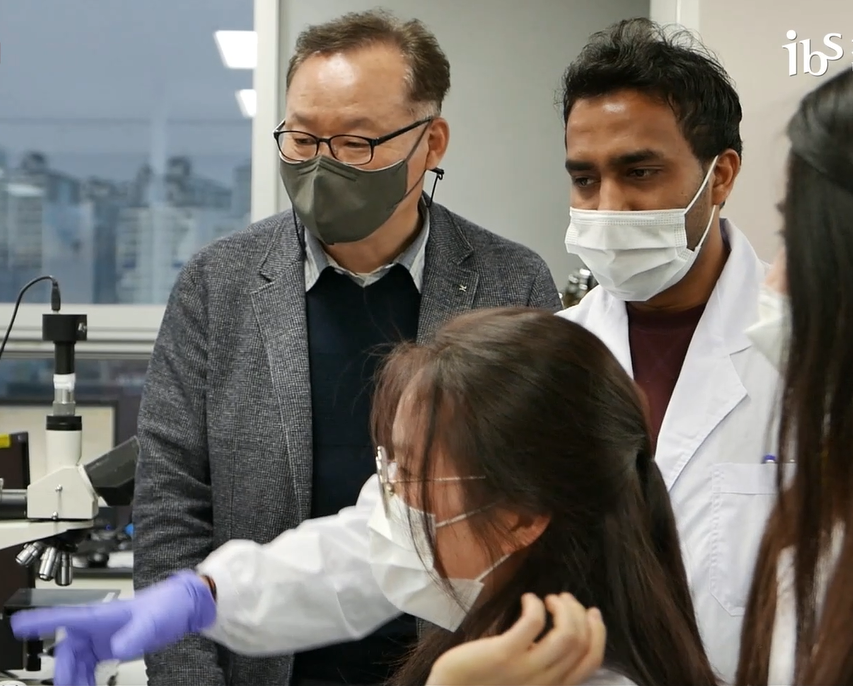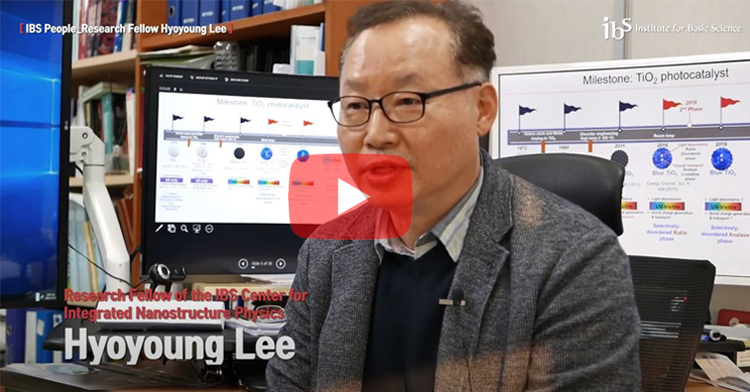주메뉴
- About IBS 연구원소개
-
Research Centers
연구단소개
- Research Outcomes
- Mathematics
- Physics
- Center for Theoretical Physics of the Universe(Particle Theory and Cosmology Group)
- Center for Theoretical Physics of the Universe(Cosmology, Gravity and Astroparticle Physics Group)
- Center for Exotic Nuclear Studies
- Center for Artificial Low Dimensional Electronic Systems
- Center for Underground Physics
- Center for Axion and Precision Physics Research
- Center for Theoretical Physics of Complex Systems
- Center for Quantum Nanoscience
- Center for Van der Waals Quantum Solids
- Chemistry
- Life Sciences
- Earth Science
- Interdisciplinary
- Institutes
- Korea Virus Research Institute
- News Center 뉴스 센터
- Career 인재초빙
- Living in Korea IBS School-UST
- IBS School 윤리경영


주메뉴
- About IBS
-
Research Centers
- Research Outcomes
- Mathematics
- Physics
- Center for Theoretical Physics of the Universe(Particle Theory and Cosmology Group)
- Center for Theoretical Physics of the Universe(Cosmology, Gravity and Astroparticle Physics Group)
- Center for Exotic Nuclear Studies
- Center for Artificial Low Dimensional Electronic Systems
- Center for Underground Physics
- Center for Axion and Precision Physics Research
- Center for Theoretical Physics of Complex Systems
- Center for Quantum Nanoscience
- Center for Van der Waals Quantum Solids
- Chemistry
- Life Sciences
- Earth Science
- Interdisciplinary
- Institutes
- Korea Virus Research Institute
- News Center
- Career
- Living in Korea
- IBS School
News Center
| Title | Solving humanity's problems using science | ||||
|---|---|---|---|---|---|
| Name | Communication Team | Registration Date | 2021-03-26 | Hits | 2733 |
| att. |
 thumb.jpg
thumb.jpg
|
||||
Solving humanity's problems using scienceWhile human civilization achieved an unprecedented level of technological advances over the last few centuries, these developments were also accompanied by an increasing number of complex problems. LEE Hyoyoung is an Associate Director of the Center for Integrated Nanostructure Physics within the Institute for Basic Science. Lee is one of the world’s leading scientists who spearhead the research efforts to tackle the various challenges that humanity faces in the 21st century. After working as a researcher at the Electronics and Telecommunications Research Institute (ETRI), Lee became tenured at the Sungkyunkwan University in 2009, where he began graphene-related research. In 2010, he reported a novel technology that can reduce graphene at room temperature. The work has been cited more than 1,700 times as of today, and a company has been built around this technology. Upon joining the IBS Center for Integrated Nanostructure Physics, he embarked on even more ambitious projects. In particular, the funding structure of the IBS provided an ideal environment to support these types of research with a long-term perspective. Lee stated, “For one, we are trying to be the world's first in research that no one has ever done before. Also, there are many well-known but challenging problems faced by humanity, and solving these problems is the objective of our research.” Making chiral compounds from polarized light
Most complex organic molecules exist in different chirality. Chiral molecules are referred to as enantiomers, which are two versions of a chemical compound that are mirror opposites of one another. Our body itself is chiral, as it only utilizes amino acids in L forms and carbohydrates in D forms. Likewise, most pharmaceuticals confer therapeutic benefits in one form. For example, ibuprofen is a widely used anti-inflammatory drug whose S form is biologically effective, while R form causes side effects. Selective production of chiral molecules is a challenging process. Usually, chiral auxiliaries are added to help bias the stereoselectivity of the reaction towards the desired direction, and further downstream purification steps are needed to separate the undesirable enantiomer. The high costs of these steps mean that most pharmaceuticals are produced as racemic mixtures unless the cost to benefit ratio necessitates otherwise. Hence, a more cost-effective method to synthesize chiral molecules is necessary to minimize the side effects of drugs. The optical activity of chiral molecules is a well-defined phenomenon, and it is routinely used in chemistry to measure the enantiomeric ratio of chiral molecules. One of Lee’s many projects within the Center involves taking advantage of this mechanism to produce specific enantiomers using polarized light. Lee detailed, “What we are attempting is using only light to produce chiral single molecules. Since this is a challenging endeavor that has never been attempted before, it is both worrisome and exciting at the same time.” Sustainable production of hydrogen
While the world has seen increasing adoption of renewable energy such as solar power in the last two decades, the production of energy is only half of the puzzle. The research progress in an effective energy storage solution in the forms of renewable fuels and batteries has been comparatively lacking. Among different forms of energy storage, hydrogen has been heralded as a promising renewable fuel since it can be obtained from simple electrolysis of water, a resource that is widely available on Earth. However, electrolysis is rarely used in commercial hydrogen production today, and the majority of the hydrogen that we use is derived from petroleum refinery processes. This is due to the prohibitively high cost of producing hydrogen from electrolysis, which is currently 2.5 times more expensive than petroleum byproduct hydrogen. In order to solve this problem, Lee and his team focused on the oxygen evolution reaction, which is the current bottleneck in the electrolysis of water. In particular, Lee managed to develop a catalyst that achieves a 6-fold improvement in hydrogen productivity. The new catalyst was also more resistant against oxidation, which allowed it to last 4 times longer than traditional catalysts. Conversion of carbon dioxide into fuelsTo reduce the global temperature, it is necessary to remove significantly more CO2 than we produce. There have been substantial carbon capture efforts in the last 20~30 years, which involves sequestration of CO2 in cement and its burial underground. However, such government projects haven’t solved the problem. Lee expressed, “The fundamental solution, in my opinion, is providing economic incentives for the private industries to tackle the issue. One thing that can accomplish this is a catalyst that can convert CO2 into valuable compounds. After all, CO2 is free.” As such, another area of Lee’s research is the conversion of CO2 into synthetic fuels. Currently, titanium dioxide (TiO2) is widely researched as a photocatalyst that can reduce carbon dioxide and water into a mixture of carbon monoxide and hydrogen, or syngas. These syngas can subsequently be converted into hydrocarbon fuels. Currently, Germany and Japan are the world’s leaders in TiO2 photocatalyst technology. However, traditional TiO2 photocatalysts are only capable of harnessing the light energy in the ultraviolet spectrum, which results in reduced efficiencies. The main advantage which sets apart Lee’s research is that his photocatalyst is the only one in the world that is capable of absorbing light energy from a wider range of the electromagnetic spectrum in the infrared and visible light regions. Lee’s group obtained this new material by reduction of the TiO2 into a Ti3+ state with high oxygen defect density. This new catalyst is named “Lee’s blue TiO2 photocatalyst”, and it is hoped to have a wide range of applications in visible-light-driven photocatalysis of CO2 into useful fuels. Lee concluded, “As you can see, I don't have many other abilities. I really enjoy my current field. By looking at a particularly difficult problem and thinking about how to ultimately solve it? Thinking in this way leads me to believe that my goal is to demonstrate a lot of things that can benefit humanity. When I try to think like that, I feel inadequate. Just writing papers is not enough, but something that can really help humanity.”
IBS Communications Team |
|||||
| Next | |
|---|---|
| before |
- Content Manager
- Public Relations Team : Suh, William Insang 042-878-8137
- Last Update 2023-11-28 14:20














